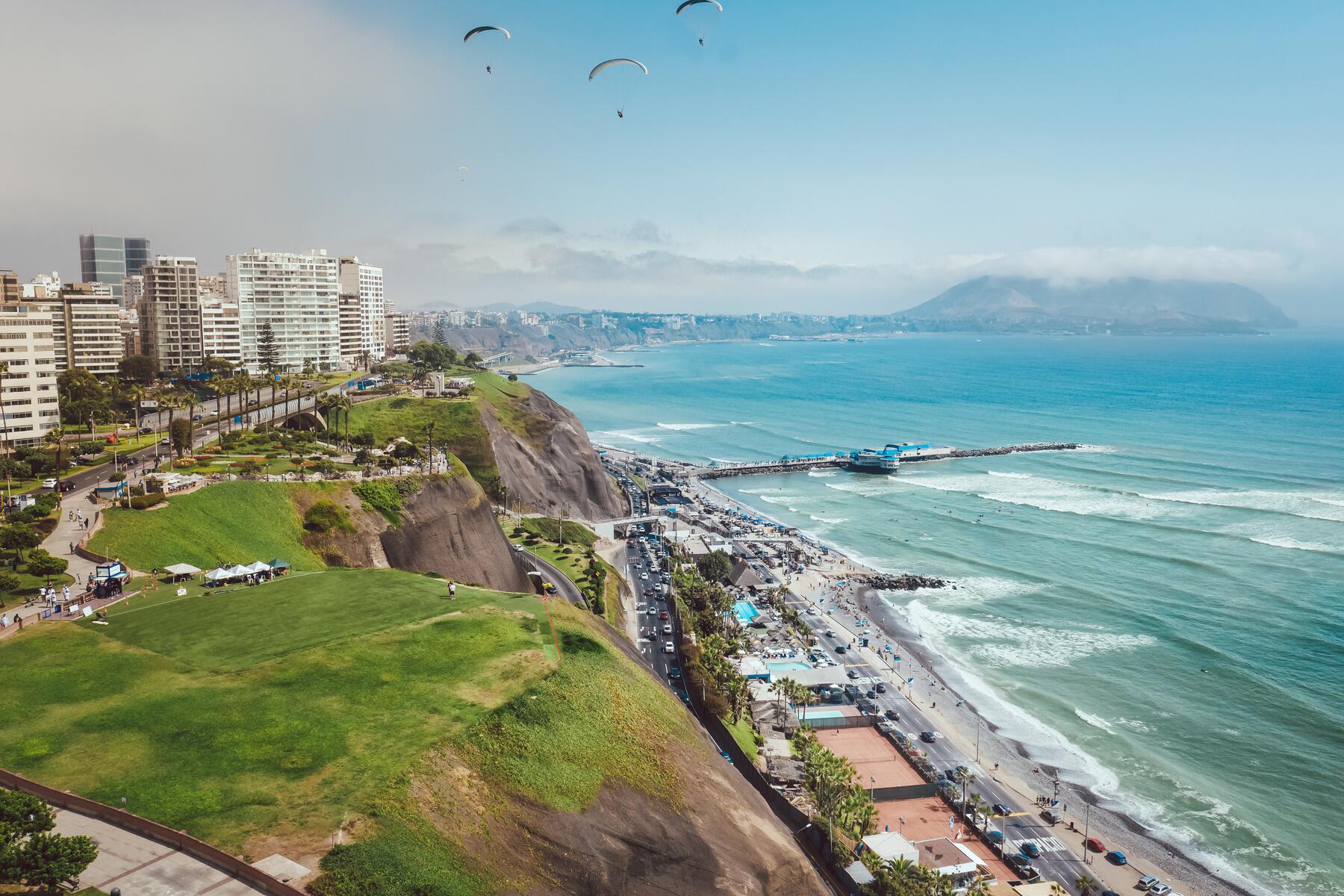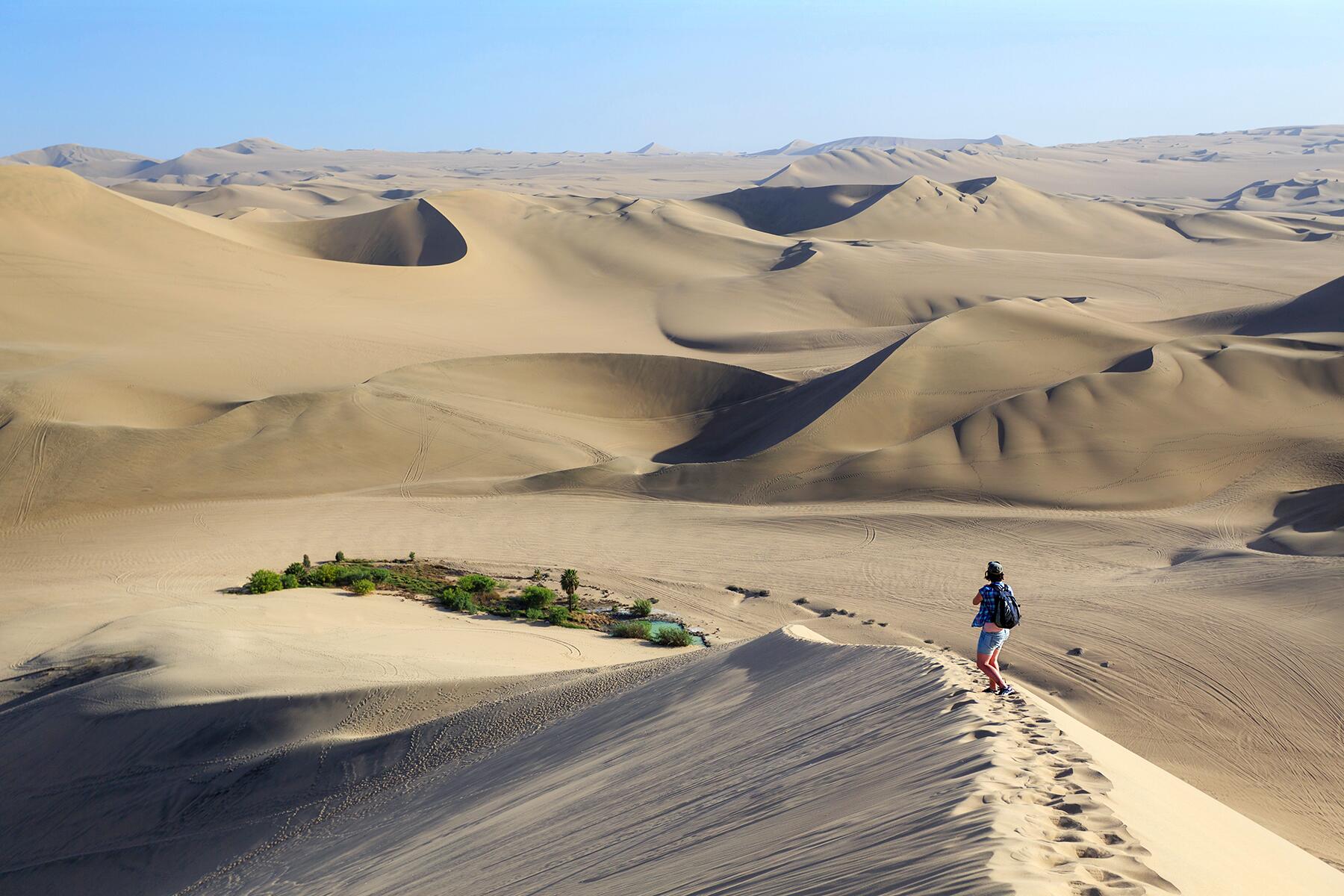The Southern Coast
The Southern Coast
From vineyards to sand dunes, rocky beaches to islands teeming with wildlife, the area south of Lima is wild and enthralling. Day-trippers and weekend warriors typically hew close to the capital, where hypnotic waves provide a soundtrack for some of Peru's toniest resorts. Meanwhile, more adventurous souls find their way farther south, to the uncanny marvels that await amid the desert.
Long before its advent as a tourist mecca, Peru's Southern Coast was home to a bevy of pre-Columbian civilizations. The undisputed stars were the Nazca, creators of one of South America's most mind-blowing attractions, the enigmatic Nazca Lines. Numbering in the hundreds, and comprising animals, humans, and perfectly drawn geometric shapes, these giant diagrams are etched into the desert floor over...
Read MoreFrom vineyards to sand dunes, rocky beaches to islands teeming with wildlife, the area south of Lima is wild and enthralling. Day-trippers and weekend warriors typically hew close to the capital, where hypnotic waves provide a soundtrack for some of Peru's toniest resorts. Meanwhile, more adventurous souls find their way farther south, to the uncanny marvels that await amid the desert.
Long before its advent as a tourist mecca, Peru's Southern Coast was home to a bevy of pre-Columbian civilizations. The undisputed stars were the Nazca, creators of one of South America's most mind-blowing attractions, the enigmatic Nazca Lines. Numbering in the hundreds, and comprising animals, humans, and perfectly drawn geometric shapes, these giant diagrams are etched into the desert floor over areas so vast they can be seen properly only from the air. How, why, and for whom they were created remains a mystery, though theories range from irrigation systems to launch pads for alien spacecraft. You can make your own conjectures as you soar over them in a privately chartered craft.
The Nazca weren't the region's only advanced civilization. The Paracas culture arrived as early as 900 BC and over the next thousand years established a line of coastal towns that still exists today. The Paracas people are long gone, and the Inca Empire conquered the region in the 15th century, yet these desert dwellers left behind some of Peru's most advanced weavings, ceramics, effigy vessels, and metal jewelry, along with a network of eerie cemeteries beneath the sands.
Peru's Southern Coast isn't all Ancient Civ. With a sunny climate, great wines, and charming fishing villages, this region has been a favorite vacation destination for generations of limeños eager to escape the big city. It's also been a commercial hub. For years during the mid-19th century, the region was the center of Peru's riches, which took the rather odorous form of guano—bird droppings, found in vast quantities on islands off the coast of Paracas and a rich source of natural fertilizer. Shipped to North America and Europe from the deepwater port of Pisco, guano proved so lucrative, there was even a war over it—the Guano War of 1864–66, in which Spain battled Peru for possession of the nearby Chincha Islands. Today, the region enchants with its abundant marine life and stark natural beauty.









